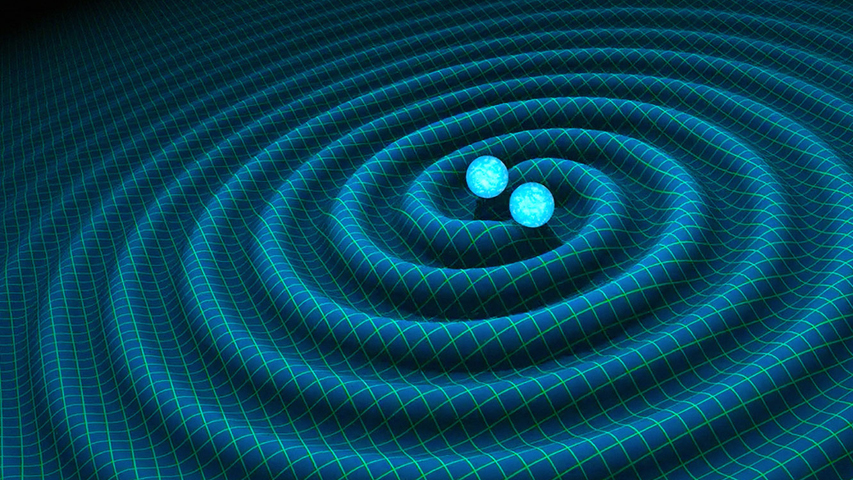Barry Barish Returns To Give Buhl Lecture on Gravitational Waves
By Jocelyn Duffy / 412-268-9982 / jhduffy@andrew.cmu.edu
An artist's impression of gravitational waves. Credits: R. Hurt/Caltech-JPL
Barry Barish, the Linde Professor of Physics, emeritus, at the California Institute of Technology, will present Carnegie Mellon University’s annual Buhl Lecture at 1:30 p.m., Tuesday, April 26 in the Mellon Institute Auditorium, 4400 Fifth Ave. in Oakland. His lecture, “Encore: Einstein’s Unfinished Symphony: ‘Listening’ for Gravitational Waves,” is free and open to the public.
The Buhl Lecture is funded under the auspices of the Buhl Professorship in Theoretical Physics and sponsored by the Department of Physics. The Buhl Foundation established the professorship in 1961 to support an outstanding theoretical scientist who would both impact theoretical research and help establish directions for experimental investigations. Fred Gilman, dean of the Mellon College of Science, has held this chair since 1995. He revived the Buhl Lecture in 1996, bringing a series of internationally recognized scientists to Carnegie Mellon for public lectures.
Barish gave his first Buhl Lecture in 2000. Then the director of Laser Interferometer Gravitational-wave Observatory (LIGO), Barish discussed gravitational waves, the ripples in the fabric of space and time whose existence was predicted by Einstein in 1916. At the time, LIGO recently had been constructed under Barish’s leadership and had begun to collect data. On Feb. 11, 2016, it was announced that LIGO’s upgraded detectors had made the first-ever observation of gravitational waves from a pair of merging black holes. This year, as an encore to his 2000 lecture, Barish will discuss the physics of gravitational waves, the techniques used to detect gravitational waves and the implications of the new observations.
Barish led the LIGO project as the principal investigator and director from the beginning of construction in 1994 until 2005. During that period, LIGO detectors reached design sensitivity and set many significant limits on astrophysical sources. The more sensitive Advanced LIGO proposal was developed and approved while Barish was director, and he continues to play an active leading role in LIGO. His other noteworthy experiments include an experiment at Fermilab using high-energy neutrino collisions to reveal the quark substructure of the nucleon. These experiments were among the first to observe the weak neutral current, a linchpin of electroweak unification theories. Barish also is the former director of the Global Design Effort for the International Linear Collider, the highest priority future project for particle physics worldwide.